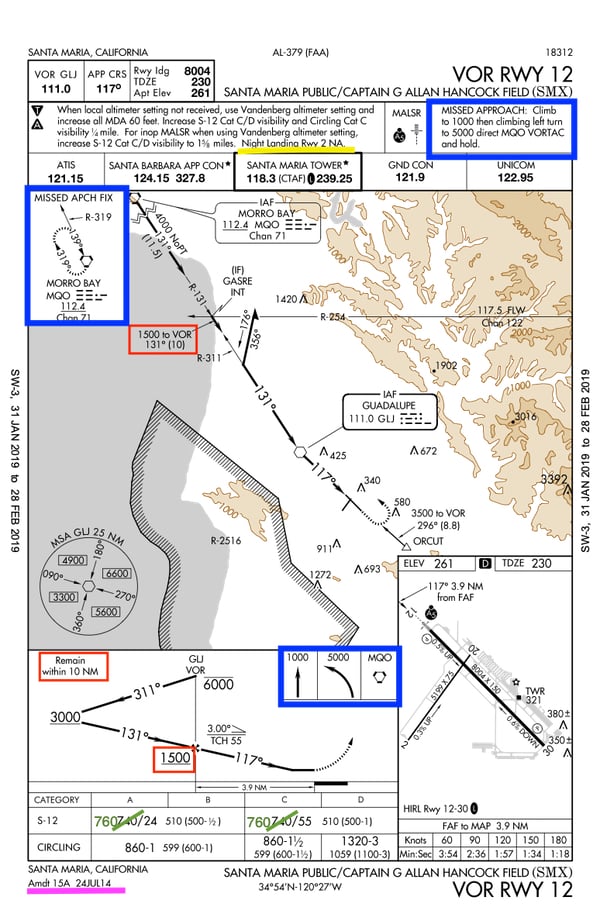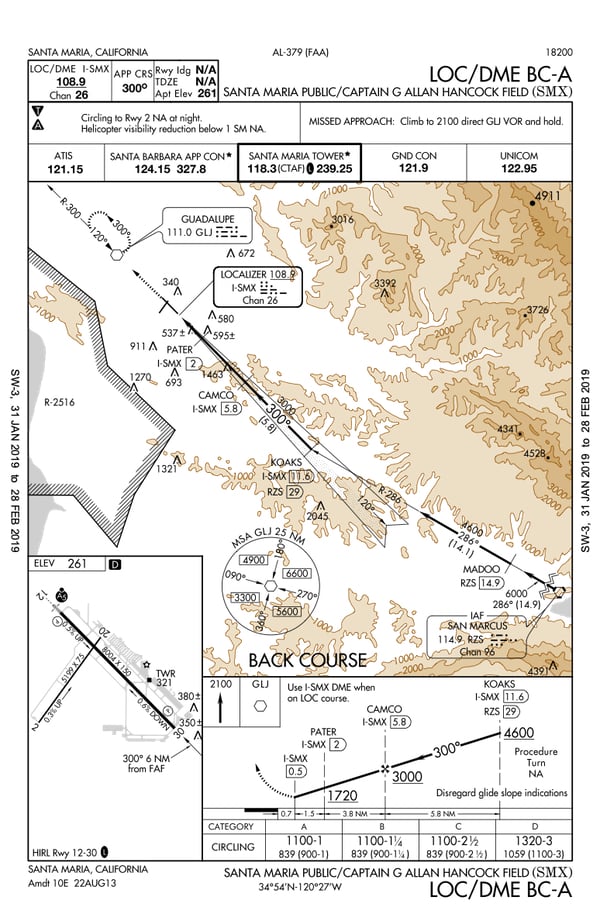Checkride Prep: KSMX Approaches
I am taking the checkride at KSMX and we have been practicing the approaches and holds that the examiner likes to use. There are five different approaches there so you get to practice just about everything you might encounter in the wild.
Any time you are flying with your iPad, it would be a good idea to have paper backups of your destination and potential alternate IAPs. You can buy the charts, but they go out of date quickly and are expensive. The FAA website has all of them for free on their Digital Products Page. You can download the entire chart supplement and terminal procedures publications or search for just the airport you need and the approaches you airplane is equipped for.
I searched for the KSMX Approaches and printed them out. ForeFlight doesn’t have the Airport Legend as a separate document, so I downloaded it and added it to my documents. Likewise, while you can always find the alternate minimums and takeoff minimums in the airport page of ForeFlight, it doesn’t save the page, so I downloaded them as well, saved just the KSMX page, and added it to my ForeFlight documents.
The first thing to note on the IAPs is the date at the bottom left corner of the plate. You don’t need to print every plate each cycle, but if the date has changed since the last cycle, you need to update your printed version. Unlike Jepp charts, these don’t tell you what changed, so if you use the approach frequently, you might want to make sure you are aware of significant changes. If you are used to flying an approach and the date has changed, make sure that you don’t fly the old numbers by memory e.g. minimums or frequencies. You can also look at the FLAG column on the download page. If it is blank, there has been no change. KSMX has had no changes since the last cycle, so we are good. You can check for all IAPs that have been changed, added, or deleted in your area by using the advanced search feature of the website.
All IAPs follow the same format, but there are some things that you might miss if you aren’t paying close attention. The date is underlined at the bottom. This approach has a NOTAM for higher minimums which suggests that that the chart may change or that when the temporary obstruction is moved the minimums will revert back. There are a whole bunch of words related to using the Vandenberg altimeter setting and you might miss that RWY 2 is NA at night. When you have a note like this, you can often figure out why and keep the information in mind when landing on other runways. In this case there is an obstruction at 340′ MSL just off the end of the runway. If you are making left traffic for RWY 12, you should be aware of it even though you shouldn’t be 120′ above the airport at that point anyway.
The missed approach is always described at the right of the remarks section. A graphical depiction is always on the profile view and it is depicted on the plan view. If the Missed Approach Hold is off the chart, it is depicted in a box near the holding point.
The three red boxes are all related. In the profile view it tells you to remain within 10 nm of the VOR when executing the procedure turn. You can use your GPS to determine this distance, but if you notice the box around GASRE, the chart tells you that GASRE is 10nm from the VOR and you can begin your stepdown there if you started your approach from the MQO VOR. If you started the approach at the GVO VOR, then you can begin your stepdown to 1500 when inbound after the procedure turn.
If you are using GPS for your approach, it is easy to identify GASRE. But you can also identify it by the intersection of the MQO 131° radial and FLW 254° radial. If you have DME, it is 11.5 DME from MQO and 10 DME from GVO on the depicted radials.
One other thing to note on this approach, that I didn’t highlight, is that there is a maximum altitude of 6000′ MSL on the procedure turn outbound. In a radar environment that won’t be an issue but in a lost comms scenario you will need to pay attention to it.

You can find the same kinds of things on the Back Course IAP. In this IAP the plan view contains the location of the Missed Approach hold so it is not contained in a box. There are no NOTAMs for this approach. There are two notes in the profile view which should be obvious. First, disregard any glide slope indications. The second is that you can use DME from the front course to determine stepdown fixes.



